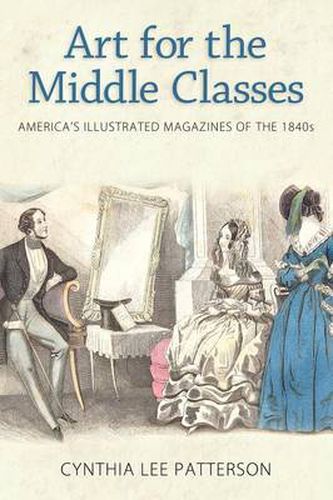Readings Newsletter
Become a Readings Member to make your shopping experience even easier.
Sign in or sign up for free!
You’re not far away from qualifying for FREE standard shipping within Australia
You’ve qualified for FREE standard shipping within Australia
The cart is loading…






This title is printed to order. This book may have been self-published. If so, we cannot guarantee the quality of the content. In the main most books will have gone through the editing process however some may not. We therefore suggest that you be aware of this before ordering this book. If in doubt check either the author or publisher’s details as we are unable to accept any returns unless they are faulty. Please contact us if you have any questions.
How did the average American learn about art in the mid-nineteenth century? With public art museums still in their infancy, and few cities and towns large enough to support art galleries or print shops, Americans relied on mass-circulated illustrated magazines. One group of magazines in particular, known collectively as the Philadelphia pictorials, circulated fine art engravings of paintings, some produced exclusively for circulation in these monthlies, to an eager middle-class reading audience. These magazines achieved print circulations far exceeding those of other print media (such as illustrated gift books, or catalogs from art-union membership organizations).
Godey’s, Graham’s, Peterson’s, Miss Leslie’s, and Sartain’s Union Magazine included two to three fine art engravings monthly,
tipped in
to the fronts of the magazines, and designed for pull-out and display. Featuring the work of a fledgling group of American artists who chose American rather than European themes for their paintings, these magazines were crucial to the distribution of American art beyond the purview of the East Coast elite to a widespread middle-class audience. Contributions to these magazines enabled many an American artist and engraver to earn, for the first time in the young nation’s history, a modest living through art.
Author Cynthia Lee Patterson examines the economics of artistic production, innovative engraving techniques, regional imitators, the textual
illustrations
accompanying engravings, and the principal artists and engravers contributing to these magazines.
$9.00 standard shipping within Australia
FREE standard shipping within Australia for orders over $100.00
Express & International shipping calculated at checkout
This title is printed to order. This book may have been self-published. If so, we cannot guarantee the quality of the content. In the main most books will have gone through the editing process however some may not. We therefore suggest that you be aware of this before ordering this book. If in doubt check either the author or publisher’s details as we are unable to accept any returns unless they are faulty. Please contact us if you have any questions.
How did the average American learn about art in the mid-nineteenth century? With public art museums still in their infancy, and few cities and towns large enough to support art galleries or print shops, Americans relied on mass-circulated illustrated magazines. One group of magazines in particular, known collectively as the Philadelphia pictorials, circulated fine art engravings of paintings, some produced exclusively for circulation in these monthlies, to an eager middle-class reading audience. These magazines achieved print circulations far exceeding those of other print media (such as illustrated gift books, or catalogs from art-union membership organizations).
Godey’s, Graham’s, Peterson’s, Miss Leslie’s, and Sartain’s Union Magazine included two to three fine art engravings monthly,
tipped in
to the fronts of the magazines, and designed for pull-out and display. Featuring the work of a fledgling group of American artists who chose American rather than European themes for their paintings, these magazines were crucial to the distribution of American art beyond the purview of the East Coast elite to a widespread middle-class audience. Contributions to these magazines enabled many an American artist and engraver to earn, for the first time in the young nation’s history, a modest living through art.
Author Cynthia Lee Patterson examines the economics of artistic production, innovative engraving techniques, regional imitators, the textual
illustrations
accompanying engravings, and the principal artists and engravers contributing to these magazines.